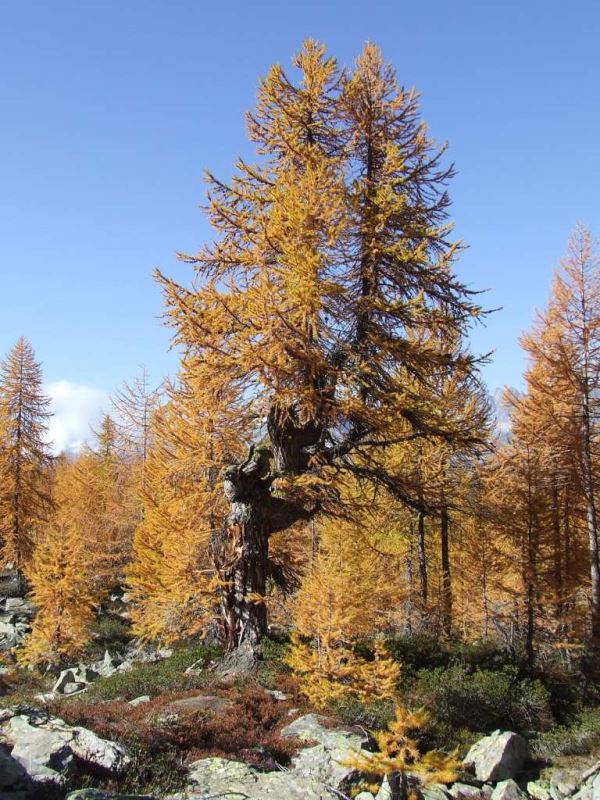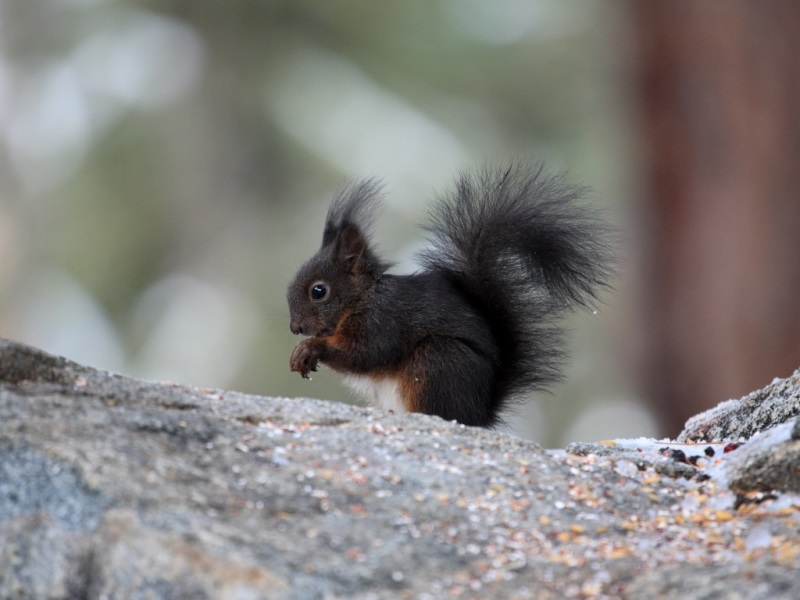 Pine in autumn
Pine in autumn
The Norway Spruce (Picea abies) is the most common species in the conifer woods and will grow alongside the Scots pine or the larch and Swiss pine.
The latter species take its place at higher altitudes.
The higher the altitude, the thicker the undergrowth as the tree cover thins out and allows light to penetrate and reach the soil.
From shady mountain pine forests growing between 1000 and 1500 m a.s.l. to thin subalpine forests, which push upwards as far as 2,200 m with a dense carpet of rhododendrons and bilberries.
This is the habitat where the delicate and extremely rare
Linnaea borealis (twinflower) grows on the Alps, a relic of the glacial age.
Amidst woods and pastures is the eye-catching, ecotonal species
Lilium martagon (Turk's cap lily).
These environments are not suitable for amphibians and reptiles, whereas the pine woods provide the ideal habitat for various species of birds, some of which are very distinctive.
Amongst the most important for the ecological role it plays is the black woodpecker.
Measuring 50 cm in length, this is the largest woodpecker in Europe.
It pecks large holes in the tree trunks to make its nest, thus providing a refuge and nests for other species.
First and foremost of these is the Boreal owl, a night raptor with a very wide, characteristic facial disc.
 Squirrel
Squirrel
The squirrel can also take refuge in these large holes, even though it usually builds its round nest made of entwined twigs in the branch forks.
The coal tit and crested tit also exploit the smaller holes whilst waiting for their eggs to hatch.
Also typical of the pine woods is the bullfinch, a tiny bird with brightly coloured feathers and a characteristic whistle.
The red crossbill has a beak with crossed mandibles and specialises in extracting seeds from the pine cones.
Mammals include the pine marten.
Belonging to the mustelid family, it has adapted to hunting on the trees and is a sign the environment is in good shape.